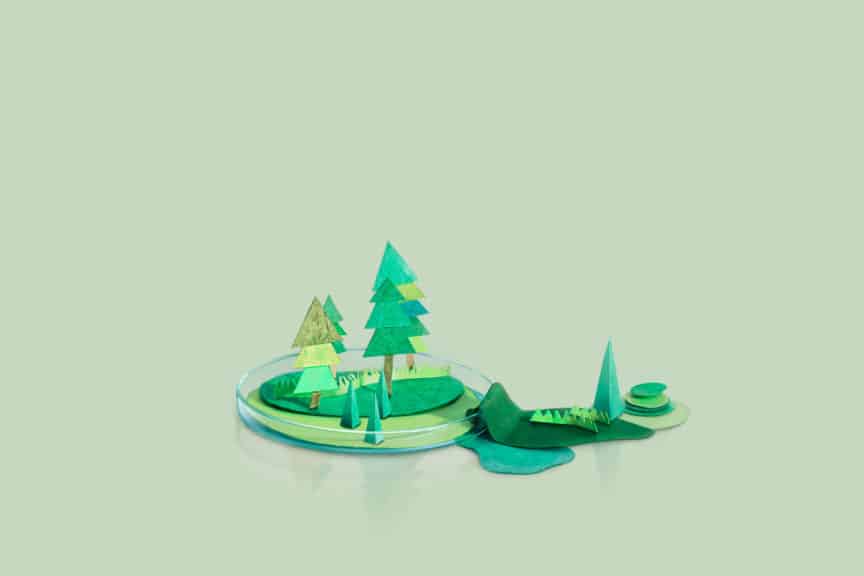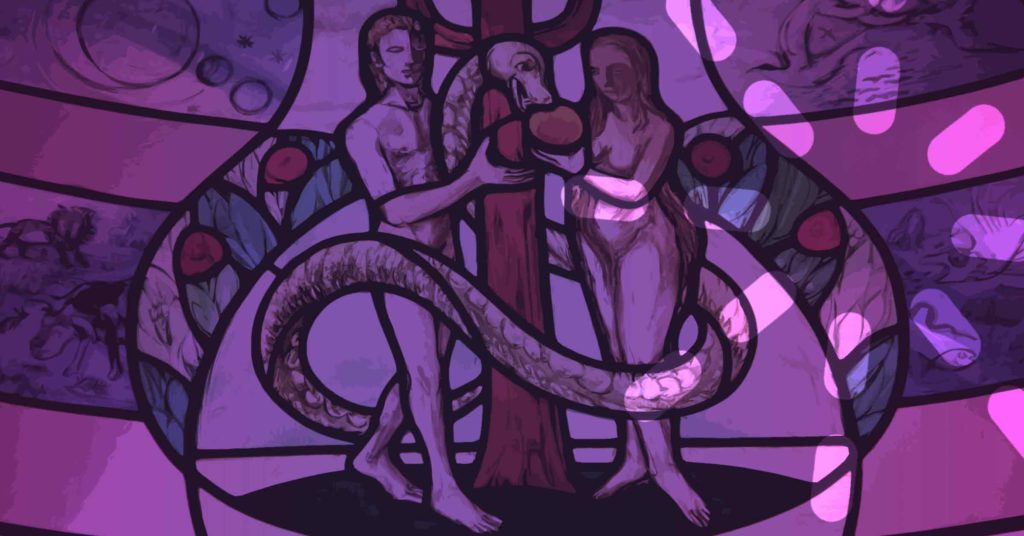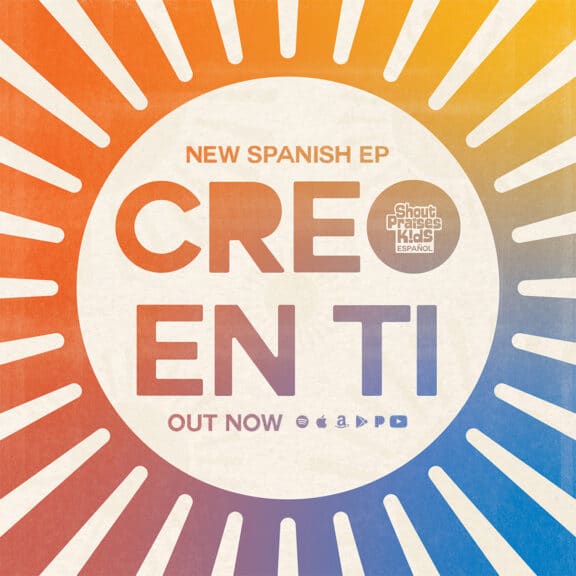Use this lesson to teach children about how God wants to be with us.
Connect
Children develop relationships with their leaders and one another through simple activities and conversation starters.
What Do You Have in Common?
Invite kids to learn more about one another by seeing some of the things they have in common with each other.
Supplies
- None

Relate
CONNECT QUESTION: Welcome and greet children. Open your time by asking this question: To what groups or teams do you belong (such as a team, a club, or a school)?
It’s fun to hear about the groups and teams you each belong to. Being a part of a team or a group is an important way to build relationships with other people and share common interests.
God created us to live in community with each other and with Him. Together, we’re all a part of the faith community. Each of our unique likes and dislikes and personalities make the community special.
Have the class stand together in the middle of the classroom. Then call out a category like “birth month” or “favorite food” and have kids mingle and try to find others in the class who share the same answer.
Then call out another category and invite children to find others who also share the same answer. Continue until children have gotten the opportunity to mingle and find out what they have in common with most of their classmates.
Developmentally Speaking
Third and fourth graders can define themselves by various characteristics, from physical features to personal achievements. This connecting activity allows children to find common ground with others and learn what traits they might share.
Gather
Children experience and learn more about God through memorizing Scripture, storytelling from The Big God Story, prayer, and discussion.
Remember Verse
The Lord is the everlasting God, the Creator of the ends of the earth. He will not grow tired or weary, and his understanding no one can fathom.
—Isaiah 40:28
Game: Word-for-Word Relay
Supplies
- Bible
- Masking tape
- Whiteboard
- Dry erase markers
Prepare Ahead
Make a six-foot line on the floor with masking tape, 10 feet from the whiteboard.
Relate
Review the Remember Verse with the children a few times so they become familiar with it. Then, divide your class into two teams, and have each team line up behind the masking tape line.
On your signal, the first person from each team will race to the whiteboard and write the first word from the Remember Verse on it.
Then each child will run back to the end of his team’s line, and the next person will run to the board and write the second word of the Remember Verse.
This will continue until the entire Remember Verse has been written on the board. The first team to finish and correctly write the verse wins.
Storytelling
Bible Passage: Genesis 2—3
Storytelling Technique: Acting
God Is Redeemer
Supplies
- Bibles
Relate
Invite the kids to help you tell today’s portion of The Big God Story by acting it out as you tell it. You’ll need a volunteer to play a tree, one to play Adam, one to play God, one to play Eve, and three to four children to play animals.
Where does The Big God Story begin? Invite the children to answer. That’s right! It starts in the book of Genesis.
Have your kids open their Bibles to the book of Genesis so they can follow along as today’s story is being told. This is where we begin to learn about our God and His love for His people and His amazing plans for the world. God is our Redeemer. Now, let’s pray together.
Lead the kids in a Prayer of Release to pause, be still, and ask the Holy Spirit to quiet their hearts and minds.
In the very beginning, there was nothing. God had not yet created anything. But then God created the world—plants, animals, sun, moon, and stars. And it was beautiful!
God saved His most important creation for last. What was that? Invite the kids to respond. Yes, God created people last. God knew that He’d have a special relationship with people—He created them to know and love Him.
Invite two volunteers to come up—one to play Adam and one to play God. Ask one of them to lie on the ground. Ask another volunteer to read Genesis 2:7 aloud.
God created a man from the dust of the earth. Invite the child playing God to pretend to form a man.
Then God breathed life into Him—God’s very breath made the man a living being. The child on the ground should pretend to wake up and come to life. He can then stand up.
God placed this first man, Adam, in a beautiful garden He had created. Adam should look around the room in wonder. He was supposed to take care of the garden.
Adam was free to enjoy the garden, but God told him one very important thing. Ask a volunteer to read verses 16–17 aloud and encourage everyone else to follow along in their own Bibles.
God didn’t want Adam to eat from the Tree of Knowledge of Good and Evil. Ask for a volunteer to play the part of the tree, and have her go to the middle of the room and stand very still while holding her arms out like branches.
To eat from it would be to disobey God. Ask the child playing God to point to the tree and shake his head. The child playing Adam should nod his head in understanding.
Then God gave Adam a very important job. God had created all of the animals, but they didn’t have names yet. God brought the animals to Adam, and Adam named them all!
Invite three to four children to play the parts of the animals. Have them walk by or crawl up to Adam one by one. He can call out names for each of them. God knew how important it is for people to be in community.
When we have friends and family, we can encourage and help one another. Even though there were so many animals, Adam didn’t have a friend who was just like him.
What is the difference between your pets and your family? Invite kids to respond.
God knew that Adam needed someone else. So what do you think God did next? Invite the kids to respond. Yes, God created a woman! Ask a volunteer to read verses 21–22 aloud.
When God brought the woman to Adam, he was so happy. He knew that she was perfect for him. Invite a child to play Eve, and have her come stand next to Adam.
When Adam saw Eve, it was like he saw a reflection of himself. He knew that she was different from him—he was a man and she was a woman—but she was made to be his perfect match. God created them to be in a relationship with each other and with Him!
Life for Adam and Eve was perfect. They took care of the garden that God had created, and they spent time with God and each other. But one day all of that changed.
God had told Adam and Eve not to eat any fruit from the Tree of Knowledge of Good and Evil. Adam and Eve should stand by the child playing the tree.
But a clever serpent came up to Eve to trick her. Ask a volunteer to read Genesis 3:1 aloud. The serpent questioned what God had told Eve. But Eve knew what God had said—they could eat any fruit in the garden except from that one tree.
Eve should point to the tree and shake her head. But again, the serpent questioned God. Ask a volunteer to read verses 4–5 aloud while everyone else follows along.
The serpent said that God was just testing them—nothing bad would happen. Eve wanted to try the fruit, so she took some fruit and ate it. Eve should pretend to take a bite of fruit.
Then she gave some to Adam, and he ate it too. Adam should pretend to take a bite of fruit. Both Adam and Eve had disobeyed God!
Both of them knew that what they’d done was wrong. They covered themselves up and tried to hide from God. Adam and Eve should crouch underneath the tree.
But God knew where they were, and He knew what they’d done. He asked them about it, and Adam and Eve blamed each other and the serpent. But they’d chosen to disobey God; they’d sinned—the very first sin—and it broke their relationship with God.
Since our God is holy and He never sins, our sin separates us from Him. What are some ways sin breaks our relationships? Invite the kids to respond.
Yes, sin affects all of our lives. It causes fights and hurts and misunderstandings. God created us to be with Him, but sin separates us from Him and from one another.
Invite a volunteer to read verses 21–22 aloud. God still loved Adam and Eve, but He could no longer let them live in the beautiful garden. They’d disobeyed him.
So He made warm clothes for them, and He sent them away. God should point across the room, and Adam and Eve should walk away. But God didn’t want His relationship with people to be broken forever.
So He promised to do something amazing. Do you know what that was? Invite the kids to respond. Yes, God promised to restore our relationship with Him.
One day He would send a Redeemer who would save the world from our sins and fix our relationship with God. Jesus is that Redeemer. Jesus is our Savior—the One who fulfilled God’s promise.
Because of Jesus, we can have a relationship with God! When we accept Jesus’ gift of salvation, God forgives us of our sins, and the Holy Spirit lives in us.
God created you and me, and He created us to be with Him! He is our Redeemer. Share your personal salvation story with the children.
Discussion Questions
- Where does The Big God Story begin? Genesis 1:1
- Who were the first two people God created? Genesis 2:7, 20, 22; 3:20
- What was the one thing God asked Adam and Eve not to do? Genesis 2:16–17
- Why did Adam and Eve eat the fruit? Genesis 3:1–6
- What did God do to fix our relationship with Him?
Respond
Children reflect on what the Holy Spirit is teaching them and respond to God through creative activities and games.
Life with God
Children consider various aspects of their relationship with God and have the opportunity to journal their responses.
Supplies
- Paper (1 sheet per child)
- Pens
Relate
God loved each of us so much that He created us to be in a relationship with Him. Even after sin entered the world, He made the way, through Jesus, for us to be able to be with Him forever.
Every single day, God gives us the opportunity to be with Him, and He has also given us a community of believers to help draw us closer to Him too.
Invite children to spend some time journaling about what it means to be with God. Pass out a sheet of blank paper to each child, and have him fold it in half and then in half again so his paper has four squares.
On the top-left corner of the paper, have kids respond to the following question: Who first taught you about a relationship with God?
Give children a few minutes to respond, and when they’re finished, invite them to write a response to the next question in another square: Who in your life helps you grow closer to God?
When they’re finished writing, invite them to respond to another question in the next square: Why is it important to you to have a relationship with God?
Finally, invite them to journal in the last square: How has God been your Redeemer? When they finish journaling, invite children who feel comfortable to share one thing they wrote on their sheets.
(Optional) Body Twister
Children play a game of Twister to help them consider that they were created to be in relationship.
Supplies
- None
Relate
When God created the world, He created humans like you and me to live in community with each other and with Him. Together, we’re a part of the faith community.
Invite children to work together to play a game of Body Twister where they’ll have to connect their body parts to stay in the game. To begin, have kids break up into pairs.
Then, call out different body parts to touch (for example, hand to hand or elbow to elbow or hand to knee).
After a few more rounds, make it even more difficult by having students leave parts connected while they try to connect different parts. For example, they could be connected elbow to elbow and then have to connect hand to foot, creating a body twister!
The pair to stay connected the longest wins.
When children finish playing, discuss: What was the most challenging part of this activity? Why do you think God made us to live in community with Him and each other?
Bless
Children receive a blessing from their leaders and sometimes one another. A blessing can be a prayer of commission, a portion of Scripture, or words to encourage and guide.
Supplies
- Bible
Relate
Invite the kids to stand together in a circle and hold hands as you read the blessing from Isaiah 41:9–10:
I took you from the ends of the earth, from its farthest corners I called you. I said, “You are my servant”; I have chosen you and have not rejected you. So do not fear, for I am with you; do not be dismayed, for I am your God. I will strengthen you and help you; I will uphold you with my righteous right hand.
Have children turn to the child on their left and say, “You were called and created by God.” Then, have children turn to the child on their right and repeat the same phrase: “You were called and created by God.”
Then, as the kids are still standing and holding hands, pray a blessing over the entire group:
May you know that God is your Redeemer. May you have no fear or worry, but may you know that He’s always with you.
Did you like this lesson? Get more free lessons here! Discover how Tru gives space for every child to respond to God.

This lesson is from Tru—a life-changing, spiritually-forming, parent-engaging, kid-captivating, downloadable curriculum designed for churches of all sizes and denominations. Check out this video for more!
Like what you see? Visit TruMinistry.com or our curriculum page for free lessons!










